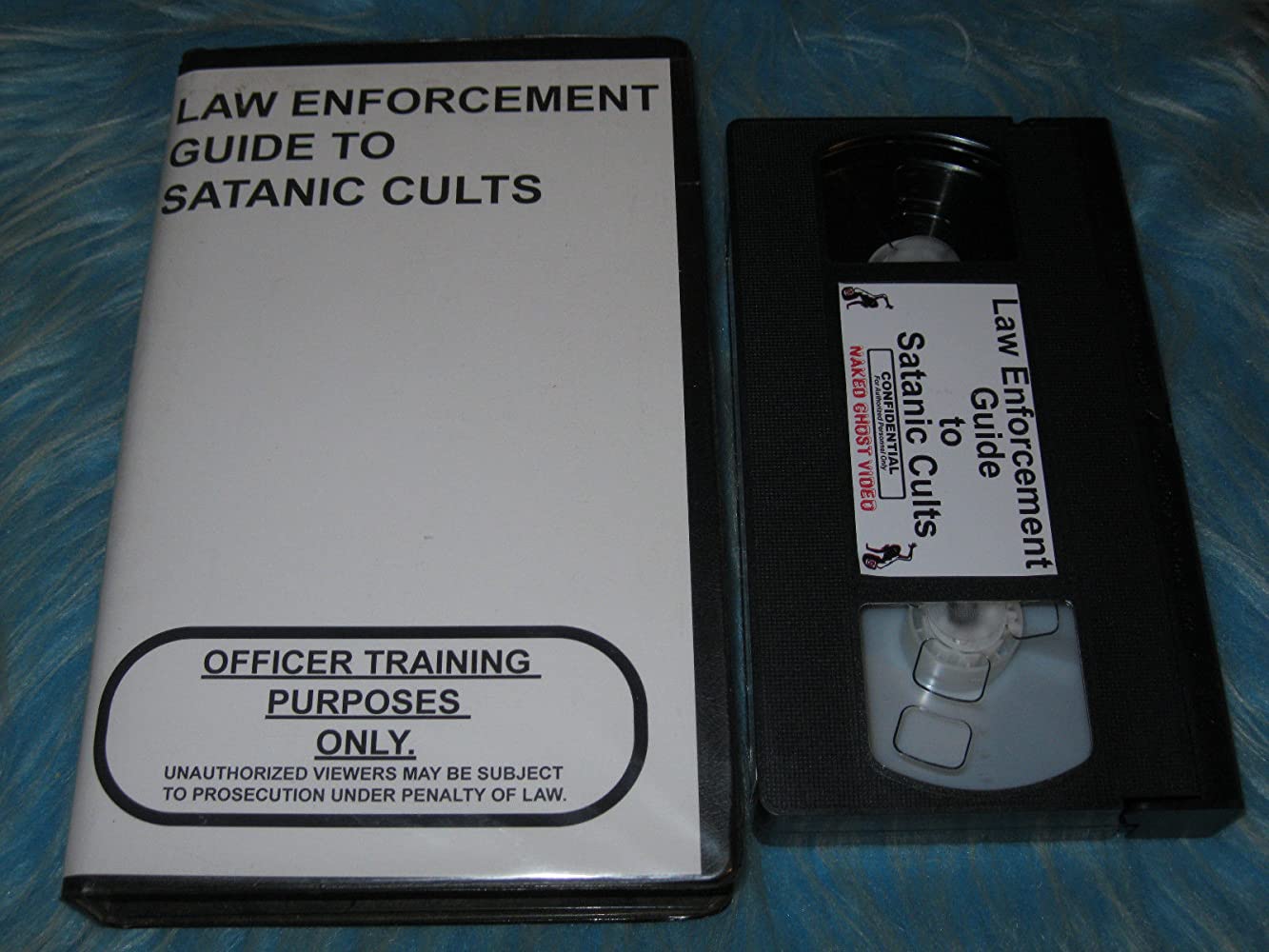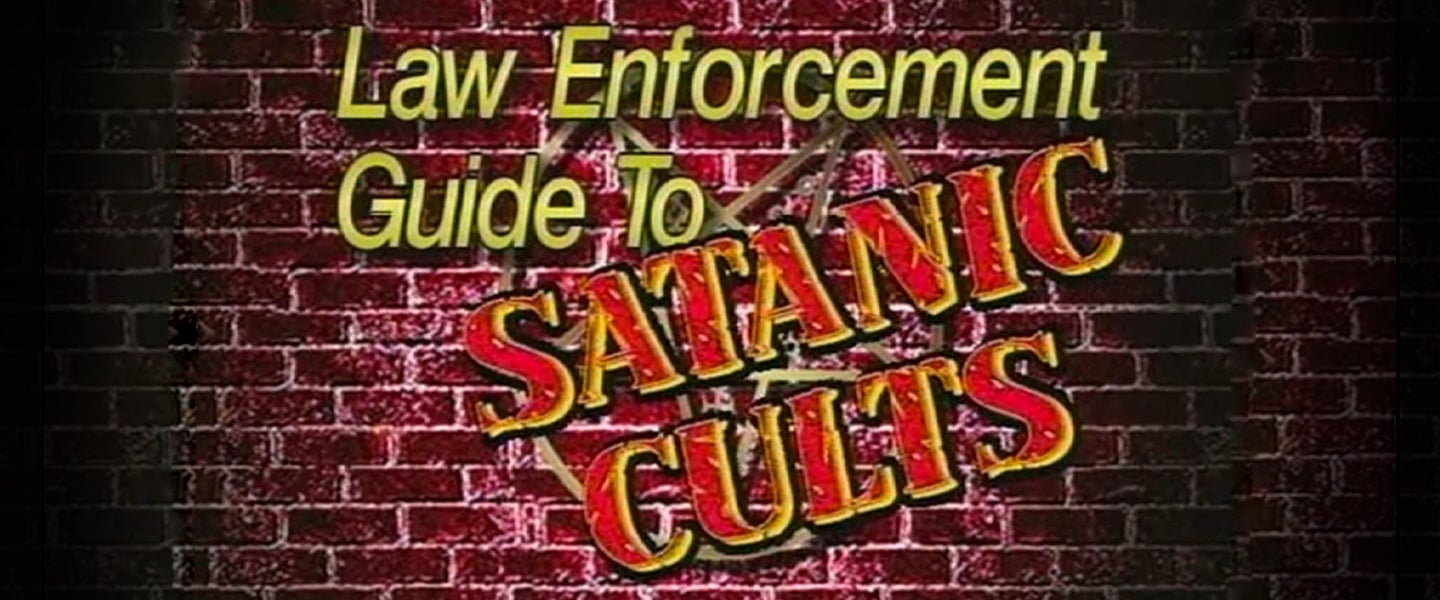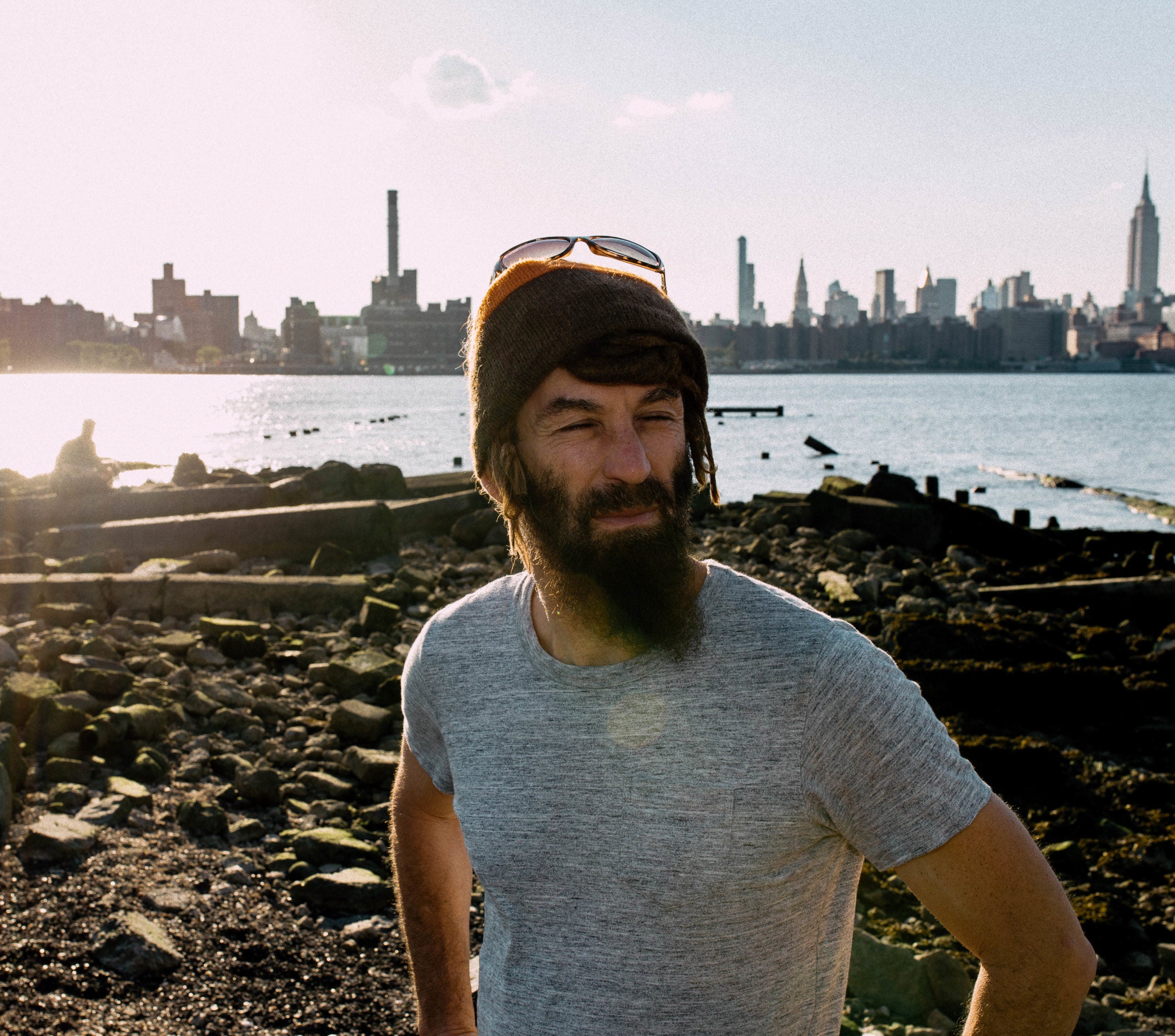The infamous Law Enforcement Guide To Satanic Cults made its video debut in 1994. This earnest, accidentally hilarious VHS tape was steered toward law enforcement and concerned parents, claiming to educate them on how to deal with satanic cults, which were said to be involved with everything from human sacrifice to selling black market babies. One of the underlying messages: If your child listens to heavy metal music, that’s a telltale sign that they’re probably involved in a satanic cult.
Despite how absurd that all sounds, Law Enforcement Guide To Satanic Cults was part of the larger mass-hysteria era of “Satanic Panic” that swept through the U.S. in the 1980s and 1990s. Oprah dedicated episodes to the dangers of satanic cults, and Geraldo did a whole “investigative” deep dive on Satanists preying upon our children (though, he later issued an apology for doing so). But despite the alarming amount of competition, Law Enforcement Guide to Satanic Cults is the definitive video that succinctly captures the frenzied zeitgeist.
Etched in the memory of anyone unfortunate enough to have been forced to watch it are characters like cop/pastor Gordon L. Coulter, adorned in a Cosby sweater, leading us on a tour of this blood-drinking underworld and providing police officers crucial “insider” tips for dealing with Satanic cult crime, all while spouting such unintentional Haikus as, “In Satanism, that which is good is bad, and that which is bad is good.”
There’s also self-proclaimed occult expert Eric Pryor, who was once, himself, involved in the “Satan Camp” before finding Jesus, giving us a tour of a San Francisco park that “randomly” has pentagrams spray-painted on almost every damn tree. And yes, it’s the exact same park seen in the opening credits of Full House (did Uncle Joey know about this?). Pryor contributes such gems as, “There’s two different communities that use this park. One is the pagan, or occultic, community, and the other, of course, is the homosexual community. Interestingly enough, they go hand-in-hand…”
Then there’s a sensationalist testimony from a former Satanic cult abuse survivor, face hidden in a darkened shadow, along with hardened detectives providing graphic details of gruesome satanic-related murders that involved bone-collecting. The kicker is a sexy blonde bikini model, for some reason, marked up with pentagrams on her bare, tight stomach, who is used by Coulter for demonstration purposes to illustrate what goes on during one of these Satanic cult human sacrifice rituals.
Oh, and all of this is backed by a homemade synth music soundtrack.
It’s awesome.
The message of Law Enforcement Guide to Satanic Cults is clear: Police and parents should be warned that your child could fall prey to these satanic cults, or be scooped up by a band of blood-drinking myriads and used in one of their human sacrifice rituals. The video even provides a Satanic Calendar with exact dates of when these sorts of things usually take place.
This Satanic Panic masterpiece — the only co-screenwriting endeavor of Coulter — was backed by Word Entertainment, a Nashville-based Christian film company, as part of a larger satanic video series. The executive producer, meanwhile, was a man named Lenny McGill, who now owns the largest Glock megastore in the country. McGill is known for producing/starring in roughly 300 gun videos, where he can be seen firing off various magnitudes of heat with the vigor of a 1980s action-hero version of Joe Exotic.
At the time, McGill ran a production facility in San Diego, where he would work out deals allowing people to use his equipment in exchange for co-ownership of the video. Thus, the video’s persuasive director, Devin Dehaven, pitched him the idea of a cinematic deep dive into satanic cults. “And I said, ‘Okay, I could probably sell it,’” McGill tells me. “Because we had a pretty big law enforcement following. And so he basically went out and shot it.”
Initially, Law Enforcement Guide to Satanic Cults wasn’t a big hit. “We sold a few, but it wasn’t that huge,” McGill recalls. “Obviously, that was geared toward law enforcement, but I think there’s some other kind of audience out there. They’re watching it too, because I know, people do talk about it. But no one’s calling me up asking about it,” he adds. “You’re the first person in 10 years.”
Dehaven is acknowledged by those who worked with him as a man who was always driven and hustling, juggling several projects at once (one source even claims he financed his first film right out of high school by selling fake IDs). Around the time of its creation, Dehaven was also crusading against Satan in other ways, too — namely, directing Christian metal band videos.
Since then he’s gone on to be a big-time music video director, working with Carrie Underwood, the Montreux Jazz Festival and directing the very anti-anti-Satanic The KISS Monster World Tour. Naturally, I reached out to Dehaven to see if he would talk about his part in the 1994 VHS tape classic, but he seemed somewhat offended that I’d even ask. “Yeah, I was a teenager going back to Law Enforcement thing [sic], that’s so far in the past I don’t even remember those docs,” he writes via email. “Assumed you were referring to the massive amount of shows we are doing now as our tech is pioneering the ability to do live entertainment now.”
So instead, I connected with Cary Bertoncini, who served as production manager and right-hand man on Law Enforcement Guide to Satanic Cults, as well as Dehaven’s previous satan-themed videos, providing not only the Satanic cult research, but also conducting the on-camera interviews. He and Dehaven grew up together in Sacramento with a partnership sparked by a Tarantino moment: They met while both working at the same video store. Now a teacher in Saipan, Bertoncini provided the full behind-the-scenes scoop on this cult video.
How did this project come about?
Devin had already made a movie, right after he graduated from high school. I was a college student at the time, so he wasn’t paying me very much. And mostly I was doing the work because it was interesting for me. Devin gave me the production manager title because that’s the way he is. I asked him not to name me for research on this, because I knew it would be, well… what it is. At the time, I’d just accepted a Fulbright Fellowship, and I had the idea that I was going to be an important academic.
I just remember being a little bit overwhelmed. A lot of what gets labeled as satanic activity is really just some kids goofing around, and maybe it goes a little too far sometimes.
What are your recollections of cop/pastor Gordon L. Coulter?
He was a minister. He was very passionate about his ministry and about the danger and power of Satan, so his range of narrative was narrower because of that. Everything he saw with the project was related to his ministry, whereas for me, I’m more of an academic — I maintain a little more objectivity with whatever the topic is. For Devin, it was about the development of the project and moving forward with his career. Since Word [Entertainment] and Coulter wanted shockumentary, that’s what he made — [Dehaven] has a flair for the dramatic, and that plays a whole lot better in the music industry than it does in the “documentary” world.
What did you research that made it into the film?
I went into the historical background of some of the counter-narratives to Christianity throughout the years. Some of the historical stuff got in, but the video had a little bit more dramatic presentation, obviously. From [Dehaven’s] standpoint of the project, he used it to establish a long track record of these kinds of anti-Christian or pro-Satan movements and organizations, so it mostly informed the narrative to give it a little more of a timeline and history. We also did some interviews that focused on the more traditional American examples of quote-unquote “satanic cult” behavior, which talked a little bit about Anton LaVey, the Satanic Church and youth goths.
Were you the one who researched the activities on the “Satanic Calendar”?
Right, “sex with demons” is a big part of Halloween. Dude read that text without breaking — impressive. I don’t know where they got the information for the satanic calendar, but a lot of it is pretty whack. They seem to present a lot of Catholic imagery, dates, etc. as satanic, which seems like one of the symptoms of some hyper-vigilant, Evangelical protestant fundamentalists.
Was the sensationalism intentionally put in it? I’m thinking about the bullet points of satanic cult activity supposedly being done by a cauldron of satanic worshipers, like human sacrifice. There really hasn’t been a documented case of a Satanic cult doing that. Where was that information coming from?
Well, some of it came from my research. Some of it came from crime data and statistics from the detectives. I don’t think Devin manipulated any of the information, but it’s possible there could have been something that was used out-of-context. I think it’s more like the way that he cut some of the interviews, choosing the angles, the lighting or just the moments where somebody’s facial expression or whatever is most evil or scary.
I think he did the same thing with words — he chose the words that would help sell whatever the feeling was that he’s trying to get out of that moment. At the time, as somebody who had done the research, I felt a little uncomfortable with that. But I recognize now that was his job — to make a video that was going to make people have a visceral reaction. And if you sobered it down with a balanced, objective reporting of the information, I don’t think it would have worked. With a little more years under my belt, I can understand what he was doing.
Early on, the first piece of research I did that they used was the First Amendment protections. I simply stated that all religions are equally protected, but old Gordy there spins it like something sinister. The nine statements from the Satanic Bible listed in the video are from that book — I summarized key points. I still have the book in a box somewhere. I don’t think the others would even read the book, it made them uncomfortable. I read the whole book while working on this.
I have a vague memory of the “abuse survivor” interview. I remember not being sure whether to, or how much, to believe her. She definitely seemed to have suffered something and was still affected by it. But she didn’t seem… I don’t know, I wouldn’t want her to be my witness in a trial.
The main park that was used in the filming is Alamo Square, the park you see in the opening credits of Full House. What stands out about that day of filming?
An image that I remember, when we were walking around, there were some pentagrams and things like that, that had been left on the ground or on trees or something like that.
Were the pentagrams and graffiti really already there when you arrived? Watching the video, it looks like it was hastily added by a prop guy moments before shooting. Was it really like that when you got there?
I had the same impression when I went to the park. It looked like it was done on purpose for us… That may have been when we interviewed the guy that was creepy.
Eric Pryor? The former Satanist?
Yeah. And that was the guy who seemed like he enjoyed the attention a lot.
So do you think he staged the Satanic symbols in the park?
Yeah, I suspect there’s a chance of that, because there was a little bit too much and it was pretty consistent in its presentation. But, you know, he may have also been recreating things that he had done in the past, right? So if he was creating a scene, he was creating a scene that actually was, to a degree, real, but just not in that moment, and in that exact place.
Normally, my role was to help the interviewee relax and feel comfortable in front of the camera, but with Eric, there was no need. He liked having the camera on him. I remember thinking he had staged everything, but it’s possible he didn’t — it could be there was stuff like that in that park on a regular basis, but I wouldn’t be surprised to learn that he’d put all that stuff there. Eric’s description of artifacts is loaded with BS, which should be pretty obvious.
He plays a big role in the video. How did you find him?
We met him in San Francisco. We did some outside interviews earlier in the day, and then later, when we met him at the ministry and did the longer interview, that’s when he really made an impression. He was supposedly reformed and now was working on the good side. But we had a long interview with him and I just remember coming out of that interview thinking, “That guy was scary.”
What made him so scary?
He enjoyed telling us about his [satanic] past a little more than I think we were prepared to accept. He had a dramatic presence. He really enjoyed being on camera. He described some ritual sacrifices he had done, including a very gruesomely detailed account of sacrificing a horse. Also, his descriptions of his own self-mutilations. He seemed to really enjoy talking about the stuff he had done.
He was working for a ministry, and I think he would purposefully play into the fears of the followers — they had him as some kind of former satanic cultist giving them the inside story, like their own spy guy. I think he liked playing things up for them. It’s pretty clear that outside of his own stories, he didn’t have very grounded knowledge in much of anything. Definitely a shady guy, but also a bit sad and tragic.

Were any of his stories left on the cutting room floor?
None of the scary parts of our interview with Pryor are in this video. He was describing some of his self-mutilation and some of the animal sacrifices that he had performed. And he just really got into the role. He had pretty visceral scars on his arms, so he was very believable.
He didn’t seem like he was describing something that was from a long time in the past, or that he was ashamed or that he had moved beyond it. It seemed like he was really enjoying the moment. When he was talking about slashing his arm open, that was one of the moments that I remember it being a particularly passionate description. He made the motion like he was slicing his arm open again, but obviously he didn’t have a knife in his hand at the time. But it was just the way he seemed very pleased with our attention — he seemed to enjoy talking about the experiences a great deal.
Do you think he was being truthful, or do you think he was maybe putting it on for the cameras?
I think a lot of it was truthful. I mean, the scars — either he or somebody else slashed his arms open in a very similar way to the way he described. That’s what I mean by him being believable. You can’t fake a scar; they were very real. I think he may have embellished some of it, but I think a lot of it, probably most of it, and possibly all of it, is at least reasonably accurate.
The one scene that takes a 180 from everything else would be the bikini model ritual sacrifice demonstration. Whose idea was that?
Ah, man — I think I met that bikini model during post-production at a beach party in La Jolla. She and her friends are the girls Devin told I was the body double for Tom Cruise — I was in pretty good shape back then. I wasn’t there for that shot, but I remember hearing about it. That might’ve been Devon’s idea. Kind of a nod and wink at the project.
And what was the feedback like once the film came out, from friends or people you know?
They were usually pretty creeped out. Devin was talented, so the presentation works. He put together videos that have an impact, so you definitely get a very creepy mood from that video. I think that’s what he was angling for; he wanted people to feel a bit creeped out, a bit scared. For me, I’m more of an academic — I was a bit uncomfortable with the level of dramatic presentation. But that’s not what most people want.
The video was part of an era they called the “Satanic Panic.” There were some parents who would watch a video like this, then look at their kids who were into, say, heavy metal, and suddenly think they’re part of a satanic cult. What do you think about the video fostering parents into thinking that way?
Considering that it was backed by a ministry, I think that’s probably the angle they wanted. To them, it’s righteous, because if they can save a child, then it’s worth it. But, you know, for me, from a little bit more of an objective, academic perspective, it seems like it’s creating fear where there really isn’t a whole lot to be afraid of. So should we be involved in our children’s lives and make sure that they’re making healthy choices? Of course. The likelihood of any kids getting deeply into something like what those detectives were describing is almost none. But, you know, that’s not a very interesting video to say that.

